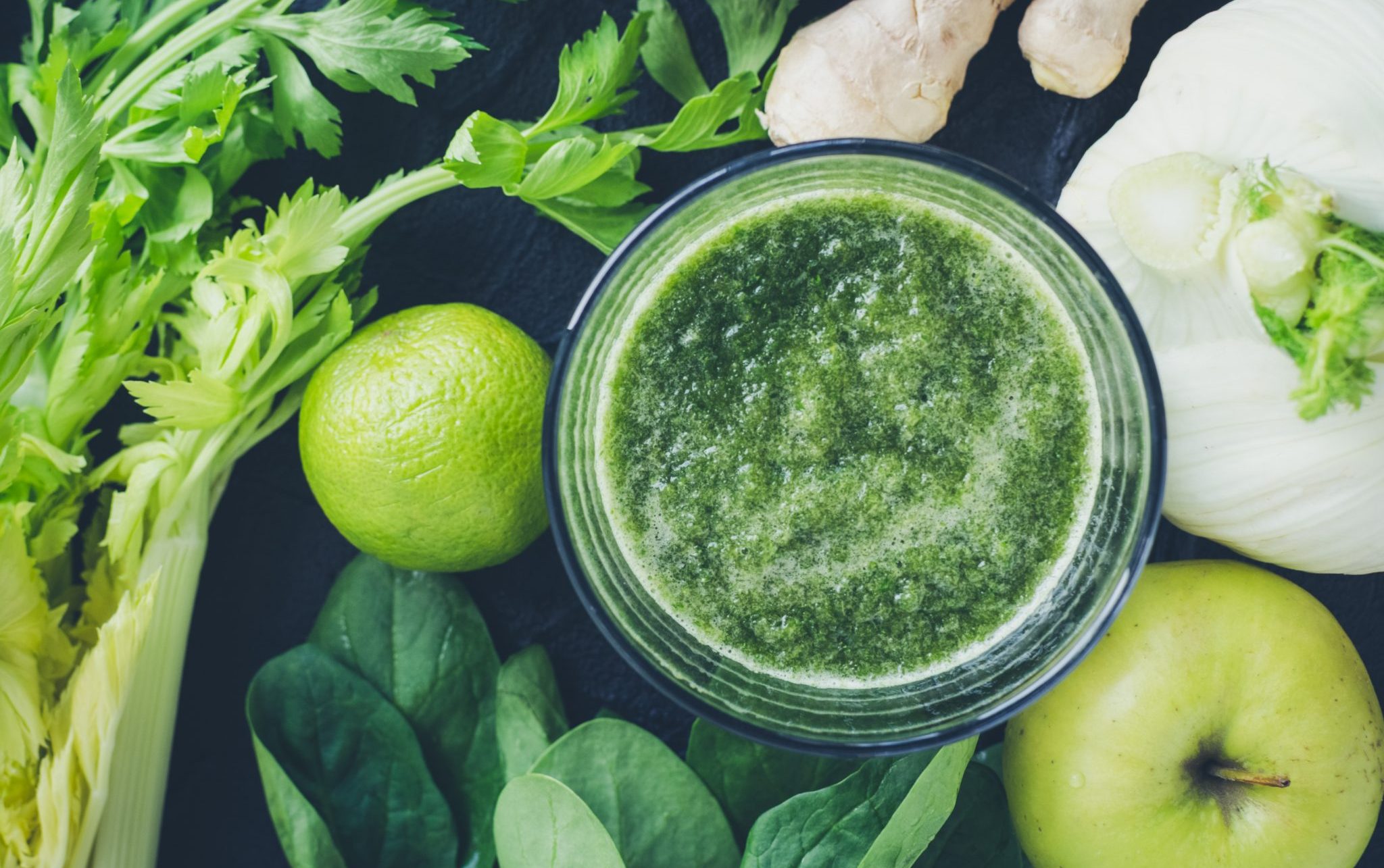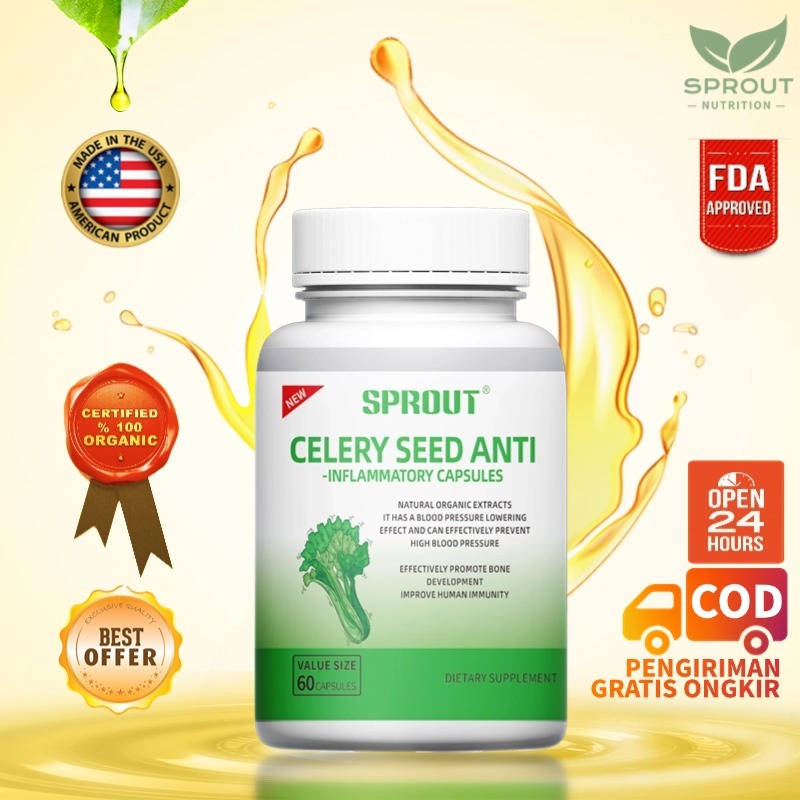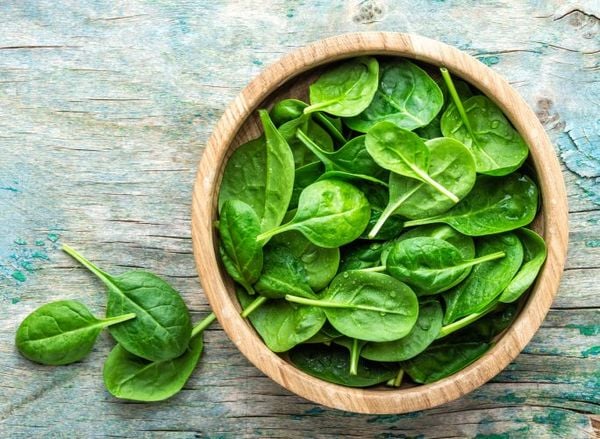Nature’s Anti-Inflammatory: Using Celery to Combat Chronic Pain
The Silent Scourge and Nature’s Whisper
Imagine a world where a persistent, invisible enemy gnaws at the edges of daily life, stealing vitality, dimming enthusiasm, and rendering simple movements agonizing. This is the reality for millions grappling with chronic pain, a pervasive health crisis often fueled by the insidious fire of chronic inflammation. While modern medicine offers powerful tools, its arsenal sometimes comes with a cost – side effects, dependency, or a failure to address the root causes. In this landscape of suffering and seeking, a quiet whisper from nature often emerges, suggesting that relief might be found not in complex pharmaceuticals, but in the humble bounty of the earth.
Among these natural remedies, one often overlooked contender stands tall: celery. More than just a crunchy snack or a soup base, celery (Apium graveolens) holds a rich history and a burgeoning scientific profile as a potent anti-inflammatory agent. This article will embark on a journey, peeling back the layers of this unassuming stalk, to uncover its profound potential in the battle against chronic pain. We will delve into the science, explore its historical uses, and illuminate practical ways to integrate this verdant wonder into a holistic strategy for reclaiming wellness. For the knowledgeable seeker, the story of celery is a testament to the power of nature’s pharmacy, offering a compelling narrative of hope and healing.
Part 1: Understanding the Enemy – Chronic Inflammation and the Pain Cycle
Before we fully appreciate celery’s capabilities, it’s crucial to understand the adversary: chronic inflammation. Inflammation, in its acute form, is a vital physiological process – the body’s first responder to injury or infection. It’s the redness, swelling, heat, and pain that signal healing is underway. Picture a sprained ankle: inflammation rushes blood, immune cells, and repair mechanisms to the site, initiating recovery. This is acute inflammation, a necessary hero.
The problem arises when this protective mechanism overstays its welcome, transitioning into a chronic state. Chronic inflammation is like a fire that refuses to be extinguished, smoldering quietly beneath the surface, constantly activating the immune system without a clear threat to resolve. Instead of healing, it begins to damage healthy tissues. This persistent immune response is now recognized as a fundamental driver for a vast array of chronic diseases, including cardiovascular disease, diabetes, neurodegenerative disorders, certain cancers, and crucially, chronic pain conditions.
The Intimate Link to Chronic Pain:
The connection between chronic inflammation and chronic pain is deeply intertwined and multifaceted. Inflammation directly contributes to pain in several ways:
- Chemical Mediators: Inflammatory cells release a barrage of chemical messengers, such as prostaglandins, bradykinin, histamine, and cytokines (like TNF-alpha, IL-1, IL-6). These chemicals directly sensitize nerve endings, making them more responsive to pain signals. Prostaglandins, in particular, are notorious for their role in pain perception, often targeted by common anti-inflammatory drugs like NSAIDs.
- Tissue Damage: Prolonged inflammation can lead to structural damage in joints (as in rheumatoid arthritis), muscles (myofascial pain), and other tissues. This damage itself becomes a source of chronic nociceptive (tissue-damaging) pain.
- Central Sensitization: Chronic inflammatory input can lead to changes in the central nervous system (spinal cord and brain), making it hypersensitive to pain signals. This phenomenon, known as central sensitization, means that even minor stimuli can be perceived as intensely painful, and pain can persist even after the initial tissue injury has healed. Conditions like fibromyalgia and complex regional pain syndrome are thought to involve significant central sensitization.
- Edema and Pressure: Inflammation often involves fluid accumulation (edema) in tissues, which can exert pressure on nerve endings, contributing to pain.
Common inflammatory conditions that manifest as chronic pain include various forms of arthritis (osteoarthritis, rheumatoid arthritis, psoriatic arthritis), inflammatory bowel disease (Crohn’s disease, ulcerative colitis) causing abdominal pain, endometriosis, neuropathic pain, and even conditions like chronic headaches and migraines, which have an inflammatory component.
The Limitations of Conventional Approaches:
For many, the first line of defense against chronic pain involves conventional pharmaceuticals. Non-steroidal anti-inflammatory drugs (NSAIDs) like ibuprofen or naproxen block prostaglandin production, offering symptomatic relief. Corticosteroids powerfully suppress the immune system. Opioids numb pain signals in the brain. While these can be life-savers in acute situations or for severe pain, their long-term use is fraught with challenges:
- Side Effects: NSAIDs can cause gastrointestinal bleeding, kidney damage, and cardiovascular issues. Corticosteroids can lead to weight gain, bone loss, and immune suppression. Opioids carry a high risk of addiction, tolerance, and withdrawal.
- Symptom Management, Not Cure: Many conventional drugs primarily mask symptoms rather than addressing the underlying inflammatory processes that drive the pain.
- Tolerance and Diminished Efficacy: Over time, the body can become accustomed to certain medications, requiring higher doses for the same effect.
This landscape highlights a critical need for sustainable, effective, and side-effect-friendly alternatives. This is where the story of food as medicine, and specifically celery, takes center stage.
Part 2: Celery’s Humble History and Scientific Ascent
The journey of celery from a wild marsh plant to a cultivated culinary staple and a respected medicinal herb is a fascinating tale spanning millennia. Its story begins not in gleaming laboratories, but in ancient wetlands, suggesting a deep-rooted connection between human health and the earth’s natural offerings.
A Brief History of Celery:
Evidence suggests celery’s use dates back to antiquity. Ancient Egyptians included celery leaves in garlands found in pharaohs’ tombs, signifying its ceremonial importance. In ancient Greece, celery was not just a food but a symbol of beauty and festivity, and Hippocrates, the father of medicine, reportedly prescribed celery for nervousness. The Romans used it for culinary purposes and also as a medicinal plant, particularly for its diuretic properties.
Across Asia, particularly in traditional Chinese medicine (TCM) and Ayurvedic medicine, celery held a revered place. In TCM, it was used to treat high blood pressure, regulate qi (life force), and address liver imbalances. Ayurvedic texts noted its use for digestive issues, joint pain, and as a diuretic. For centuries, these traditional practices instinctively recognized what modern science is now meticulously uncovering: celery possesses powerful therapeutic properties.
It wasn’t until the Middle Ages that celery began its transformation from a bitter wild herb to the crisp, palatable vegetable we know today, primarily cultivated in Italy. Its journey into modern cuisine, first as a flavoring agent and later as a stand-alone vegetable, cemented its place on our tables. Yet, its medicinal legacy, passed down through generations, has persisted, providing the foundation for contemporary scientific inquiry.
The Scientific Lens: Unpacking Celery’s Phytochemical Arsenal
Modern science, with its sophisticated analytical tools, has begun to unravel the complex symphony of compounds within celery that contribute to its health benefits. It’s not a single "magic bullet" but a synergistic blend of phytochemicals working in concert to exert powerful anti-inflammatory and pain-modulating effects.
Key Bioactive Compounds and Their Mechanisms:
-
Flavonoids: Celery is a treasure trove of flavonoids, a class of plant pigments renowned for their antioxidant and anti-inflammatory properties.
- Luteolin: This flavonoid is a standout. Research indicates luteolin’s ability to inhibit key pro-inflammatory enzymes such as cyclooxygenase-2 (COX-2) and inducible nitric oxide synthase (iNOS). COX-2 is the enzyme responsible for producing prostaglandins, which, as we discussed, are major contributors to pain and inflammation. iNOS generates nitric oxide, another inflammatory mediator. Luteolin also modulates the production of pro-inflammatory cytokines like TNF-alpha and IL-6, essentially dampening the immune system’s overzealous response. Furthermore, it possesses neuroprotective qualities, which can be particularly beneficial in managing neuropathic pain components.
- Apigenin: Another prominent flavonoid in celery, apigenin shares many of luteolin’s anti-inflammatory mechanisms. It also exhibits antioxidant activity, scavenging free radicals that fuel oxidative stress – a precursor and perpetuator of inflammation. Apigenin has been studied for its potential in modulating cellular pathways involved in inflammatory responses and even for its anxiolytic (anti-anxiety) effects, which can indirectly help manage chronic pain by reducing stress and improving coping mechanisms.
- Quercetin: While present in smaller amounts than luteolin and apigenin, quercetin contributes to celery’s anti-inflammatory profile through its ability to stabilize mast cells (which release histamine, a pro-inflammatory compound) and inhibit various inflammatory enzymes and pathways.
-
Phthalides: These unique organic compounds give celery its characteristic aroma and flavor, but they also contribute significantly to its therapeutic effects.
- N-Butylphthalide (NBP): This is perhaps the most well-researched phthalide in celery. While not a direct anti-inflammatory in the same vein as flavonoids, NBP exerts a range of benefits that indirectly support pain management. It has been studied for its neuroprotective effects, including improving cerebral blood flow and protecting against ischemic injury, which can be relevant in certain types of headaches and neurological pain. NBP also contributes to celery’s famous blood pressure-lowering effects by acting as a smooth muscle relaxant, which can improve overall circulation and reduce tension, indirectly easing pain. Its calming effect on the nervous system can also contribute to overall pain relief.
-
Phenolic Acids: Celery contains various phenolic acids like caffeic acid and ferulic acid. These compounds are potent antioxidants, neutralizing free radicals and reducing oxidative stress, which is a significant driver of inflammation and tissue damage. By mitigating oxidative stress, they help to break the vicious cycle of inflammation leading to more inflammation.
-
Polysaccharides: Emerging research suggests that certain complex carbohydrates (polysaccharides) found in celery may possess immune-modulating properties, further contributing to a balanced inflammatory response.
-
Vitamins and Minerals: Beyond its specialized phytochemicals, celery provides a valuable array of essential nutrients that support overall health and indirectly combat inflammation.
- Vitamin K: Crucial for blood clotting and bone health. Adequate Vitamin K intake is linked to reduced inflammation markers.
- Vitamin C: A powerful antioxidant that protects cells from damage and supports immune function.
- Folate (Vitamin B9): Essential for cell growth and function, and involved in regulating homocysteine levels, high levels of which are associated with inflammation.
- Potassium: An electrolyte vital for fluid balance, nerve signals, and muscle contractions. Its diuretic properties can help reduce edema, which often contributes to pain.
Mechanisms of Action Summarized:
In essence, celery’s anti-inflammatory prowess stems from its ability to:
- Inhibit pro-inflammatory enzymes: Directly reducing the production of pain- and inflammation-causing molecules (e.g., COX-2, iNOS).
- Modulate cytokine production: Preventing the immune system from releasing excessive pro-inflammatory signals.
- Act as a powerful antioxidant: Scavenging free radicals and reducing oxidative stress, thereby cutting off a major fuel source for chronic inflammation.
- Neuroprotection and improved circulation: Indirectly easing pain by supporting nerve health and optimizing blood flow.
- Diuretic effect: Reducing fluid retention and swelling that can exacerbate pain.
The story told by science paints a compelling picture: celery is far more than just water and fiber. It’s a symphony of bioactive compounds orchestrating a powerful anti-inflammatory and pain-modulating effect, offering a gentle yet effective approach to managing chronic pain.
Part 3: Celery in Practice – Integrating it into Your Life
Having explored the scientific foundations, the next chapter of our story moves from the lab to the kitchen, from theory to practical application. How can this humble vegetable become a powerful ally in your daily fight against chronic pain? The beauty of celery lies in its versatility and accessibility.
Forms of Celery for Therapeutic Use:
The method of consumption can influence the concentration and bioavailability of celery’s active compounds.
- Raw Celery Stalks: This is the simplest and most common way to consume celery. Eating raw stalks provides the full spectrum of nutrients, including its beneficial fiber, which aids digestion and gut health (another crucial aspect of managing inflammation). Snacking on raw celery is an excellent daily habit.
- Celery Juice: This has gained significant popularity, particularly in the wellness community. Juicing celery concentrates its liquid nutrients, allowing for a higher intake of beneficial compounds like luteolin and apigenin in a rapidly absorbable form. Many proponents report significant anti-inflammatory benefits from consistent celery juicing. However, it’s important to note that juicing removes the fiber, which has its own set of health benefits. For some, the concentrated flavor might also be intense.
- Celery Seeds: Historically, celery seeds have been a more potent medicinal form. They contain a higher concentration of certain active compounds, particularly N-butylphthalide (NBP).
- Whole Seeds: Can be ground and added to dishes, teas, or consumed directly.
- Celery Seed Extract/Oil: Available in supplement form, these are concentrated sources of the beneficial compounds, allowing for more precise dosing. Always choose reputable brands and consult a healthcare professional before taking concentrated extracts, especially if on medication.
- Celery Leaf/Powder: The leaves, often discarded, are also rich in nutrients and phytochemicals. They can be chopped and added to salads, soups, or smoothies. Dried celery leaf powder can also be used as a seasoning or supplement.
Dosage and Frequency: A Food-as-Medicine Approach:
Unlike pharmaceutical drugs with precise dosages, celery, as a food, is best approached with a "food as medicine" philosophy. This emphasizes consistent, regular consumption as part of a healthy diet rather than strict, drug-like dosing.
- For General Wellness & Mild Inflammation: Incorporate 2-4 stalks of celery daily into your diet. This could be as a snack, added to salads, or blended into smoothies.
- For Chronic Pain & Inflammation Support: Consider increasing intake. Many who experience significant benefits from celery juice consume 16-32 ounces (approximately 1-2 bunches of celery) on an empty stomach daily. For celery seeds, follow product-specific recommendations for extracts, or use 1/2 to 1 teaspoon of ground seeds in cooking or teas.
- Consistency is Key: The benefits of celery are cumulative. Regular, consistent intake over weeks and months is more likely to yield results than sporadic consumption.
Culinary Applications & Recipes:
Integrating celery into your daily meals can be both delicious and therapeutic.
- Snacks: Classic celery sticks with nut butter or hummus.
- Juices & Smoothies: Blend celery with other anti-inflammatory ingredients like cucumber, ginger, apple, or leafy greens.
- Soups & Stews: Celery forms the aromatic base (mirepoix) of countless dishes, infusing them with its compounds during cooking.
- Salads: Add chopped celery for crunch and flavor to any salad.
- Stir-fries & Roasts: Incorporate celery into cooked vegetable dishes.
- Infused Water: Add sliced celery and other herbs to water for a refreshing and subtly flavored drink.
Potential Synergies: A Symphony of Anti-Inflammatory Foods:
Celery is powerful, but its effects are amplified when combined with an overall anti-inflammatory diet. Think of it as a key player in an orchestra of healing foods.
- Turmeric and Ginger: Known for their potent anti-inflammatory compounds (curcumin and gingerols).
- Leafy Greens: Spinach, kale, collards are rich in antioxidants and vitamins.
- Berries: Loaded with anthocyanins, powerful anti-inflammatory antioxidants.
- Fatty Fish: Salmon, mackerel, sardines provide Omega-3 fatty acids, crucial for resolving inflammation.
- Healthy Fats: Olive oil, avocados, nuts.
By embracing a diverse, plant-rich diet, you create an internal environment conducive to healing and pain reduction, with celery playing a vital, consistent role.
Precautions and Considerations:
While celery is generally safe for most people, there are a few considerations:
- Allergies: Celery is a known allergen for some individuals, particularly those sensitive to birch pollen or mugwort. Symptoms can range from mild oral allergy syndrome to severe anaphylaxis. If you suspect an allergy, avoid celery.
- Medication Interactions:
- Blood Thinners (e.g., Warfarin): Celery contains Vitamin K, which is essential for blood clotting. Very large, consistent intakes of celery (especially in concentrated forms) could theoretically interact with blood-thinning medications. Consult your doctor.
- Diuretics: Celery itself has diuretic properties. Combining large amounts with prescription diuretics could potentially lead to excessive fluid loss or electrolyte imbalances.
- Blood Pressure Medications: Due to its blood pressure-lowering effects, those on medication for hypertension should monitor their blood pressure closely, especially when consuming significant amounts of celery.
- Pesticide Residue: Celery often appears on the "Dirty Dozen" list for pesticide residue. Opt for organic celery whenever possible to minimize exposure to harmful chemicals that can themselves contribute to inflammation.
- Oxalate Content: Celery contains oxalates, which can contribute to kidney stone formation in susceptible individuals. However, the amount in typical consumption is generally not a concern.
- Pregnancy and Lactation: While culinary amounts are safe, very high, medicinal doses of celery or celery seed extracts should be discussed with a healthcare provider during pregnancy or lactation due to potential uterine stimulant effects or lack of sufficient safety data.
Listen to your body, start with moderate amounts, and always consult with a healthcare professional, especially if you have pre-existing conditions or are on medication, before making significant dietary changes for therapeutic purposes.
Part 4: The Holistic Picture – Beyond Celery
While celery is a potent ally, its story within the narrative of combating chronic pain is part of a larger, more intricate tapestry: a holistic approach to wellness. True healing from chronic pain rarely comes from a single intervention but from a symphony of lifestyle adjustments, dietary choices, and mindful practices.
The Dietary Foundation: Beyond the Stalk
Celery thrives best in a supportive dietary ecosystem. An overall anti-inflammatory diet is the bedrock upon which celery’s benefits can truly flourish. This diet typically mirrors the principles of the Mediterranean diet, emphasizing:
- Whole, Unprocessed Foods: Prioritize fruits, vegetables, whole grains, legumes, nuts, and seeds.
- Lean Protein Sources: Fish (especially fatty fish rich in Omega-3s), poultry, plant-based proteins.
- Healthy Fats: Olive oil, avocados, nuts, seeds.
- Herbs and Spices: Rich in antioxidants and anti-inflammatory compounds (e.g., turmeric, ginger, garlic, rosemary).
- Hydration: Ample water intake is crucial for cellular function, nutrient transport, and detoxification.
Equally important is identifying and reducing or eliminating foods that fuel inflammation:
- Processed Foods: High in unhealthy fats, sugar, and artificial additives.
- Refined Sugars: Contribute to systemic inflammation and can exacerbate pain.
- Unhealthy Fats: Trans fats and excessive Omega-6 fatty acids (found in many vegetable oils) can promote inflammation.
- Red and Processed Meats: Can contribute to inflammatory pathways in some individuals.
- Alcohol and Caffeine: Moderate consumption may be fine, but excessive intake can disrupt sleep, increase inflammation, and exacerbate pain.
Lifestyle Factors: The Pillars of Well-being
Diet is paramount, but lifestyle factors play an equally critical role in managing inflammation and pain:
- Stress Management: Chronic stress elevates cortisol levels, which, over time, can contribute to systemic inflammation. Practices like meditation, deep breathing exercises, yoga, spending time in nature, or engaging in hobbies can significantly reduce stress and its inflammatory impact.
- Regular Exercise: Movement is medicine. Appropriate, consistent physical activity (even gentle forms like walking or swimming) reduces inflammation, improves circulation, strengthens muscles, and releases endorphins, which are natural pain relievers. It also helps with weight management, reducing the mechanical stress on joints.
- Quality Sleep: Sleep is the body’s essential time for repair and restoration. Poor sleep quality or insufficient sleep can heighten inflammatory markers and decrease pain thresholds. Prioritizing 7-9 hours of uninterrupted sleep is fundamental.
- Sunlight Exposure: Adequate Vitamin D from sunlight exposure (or supplementation) is linked to immune regulation and reduced inflammation.
The Mind-Body Connection: The Power of Perspective
Chronic pain is not merely a physical sensation; it profoundly impacts mental and emotional well-being. The persistent discomfort can lead to anxiety, depression, fear-avoidance behaviors, and feelings of helplessness, all of which can amplify the perception of pain.
- Mindfulness and Meditation: Learning to observe pain without judgment, to focus on the present moment, and to cultivate compassion for oneself can significantly alter the experience of pain. Mindfulness-based stress reduction (MBSR) programs have shown remarkable efficacy in helping individuals cope with chronic pain.
- Cognitive Behavioral Therapy (CBT): This therapeutic approach helps individuals identify and challenge negative thought patterns and behaviors related to their pain, fostering more adaptive coping strategies.
- Yoga and Tai Chi: These practices combine gentle movement, breathing, and mindfulness, offering physical benefits (flexibility, strength) alongside mental tranquility, which can be immensely helpful for pain management.
- Social Connection: Isolation can exacerbate pain and depression. Maintaining strong social bonds and seeking support from friends, family, or support groups can provide emotional resilience.
Collaboration with Healthcare Professionals: The Guiding Hand
It is crucial to emphasize that incorporating celery or any natural remedy should be seen as an adjunct to, not a replacement for, professional medical care.
- Diagnosis is Key: Understanding the underlying cause of your chronic pain is paramount. A proper diagnosis from a qualified healthcare professional (doctor, rheumatologist, neurologist, etc.) guides the most effective treatment plan.
- Integrated Approach: Work with your healthcare team to integrate dietary and lifestyle changes with conventional treatments. This might involve discussing celery’s potential benefits, potential interactions, and monitoring your progress.
- Ongoing Management: Chronic pain often requires ongoing management and adjustments to treatment strategies. Regular check-ups and open communication with your providers are essential for long-term success.
The story of fighting chronic pain is one of empowerment – taking an active role in your own healing journey. Celery, with its unassuming appearance yet profound power, offers a tangible, accessible step on this path.
Conclusion: Reclaiming Wellness, One Stalk at a Time
The journey through the world of celery reveals a truth often overlooked in our fast-paced, technologically driven lives: nature holds profound wisdom and powerful remedies. Chronic pain, fueled by persistent inflammation, casts a long shadow over millions, diminishing quality of life and eroding hope. Yet, the story of celery offers a beacon of natural possibility.
We have seen how this verdant stalk, rooted in ancient traditions and validated by modern science, orchestrates a symphony of anti-inflammatory effects through its rich array of flavonoids, phthalides, and other potent compounds. From inhibiting inflammatory enzymes to scavenging free radicals and supporting overall systemic health, celery emerges not as a mere vegetable, but as a genuine anti-inflammatory powerhouse.
Integrating celery into your daily life, whether through crisp raw stalks, revitalizing juices, or potent seed extracts, is more than just a dietary choice; it’s a conscious act of self-care, a deliberate step towards nourishing your body and calming the fires of inflammation. When embraced within a holistic framework that includes a balanced diet, stress management, regular movement, and quality sleep, celery’s contribution becomes even more significant, helping to shift the body’s internal landscape from one of chronic distress to one of healing and equilibrium.
The path to reclaiming wellness from chronic pain is often complex and deeply personal. It requires patience, persistence, and a willingness to explore all avenues. Let the story of celery be an inspiration – a reminder that sometimes the most profound healing can be found in the simplest, most accessible gifts of the earth. By harnessing the power of nature’s anti-inflammatory, one crunchy stalk at a time, we can begin to rewrite our own stories, moving from a narrative of chronic suffering to one of renewed vitality and enduring well-being.







